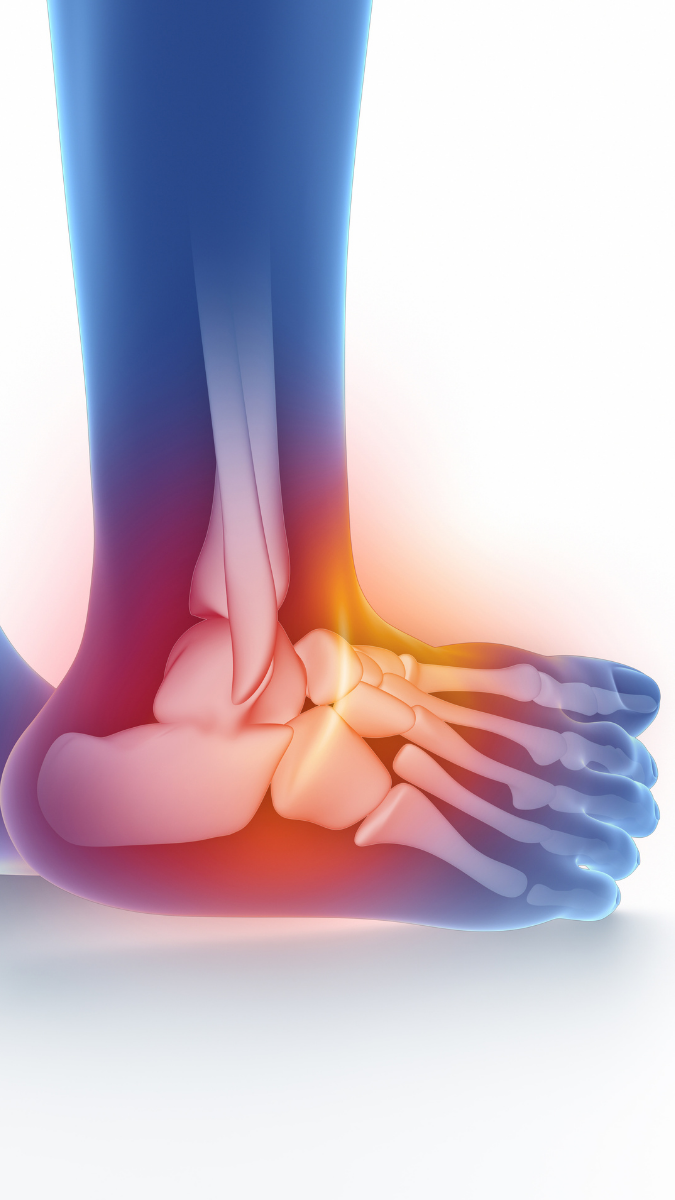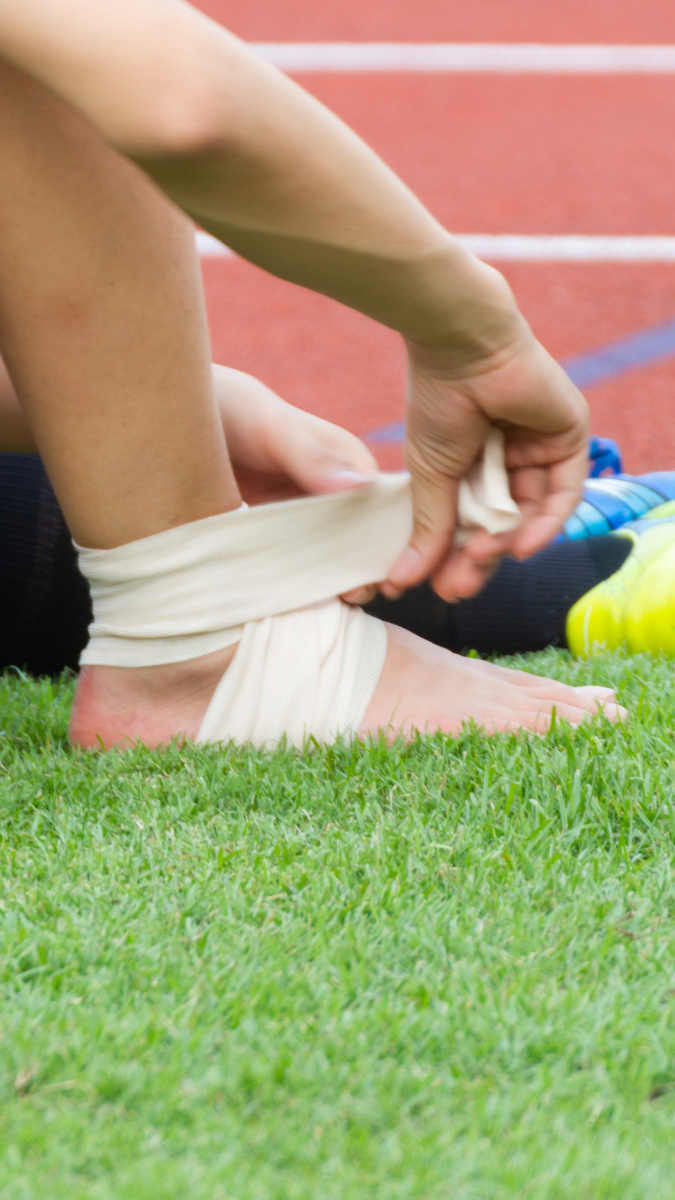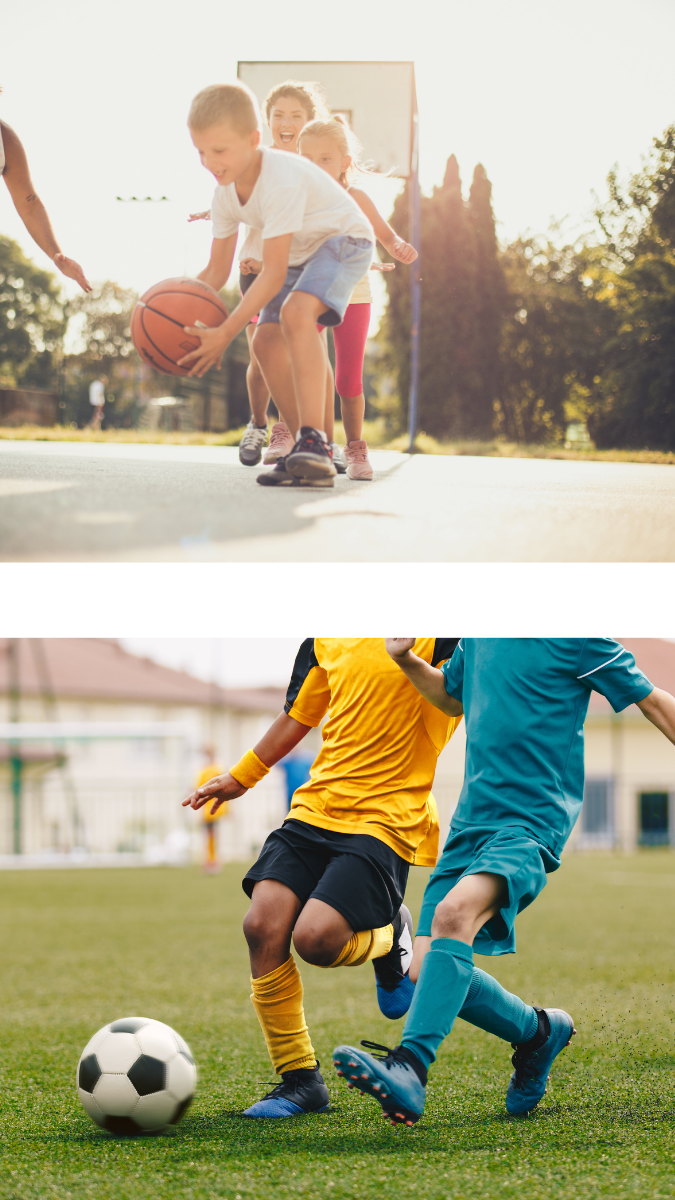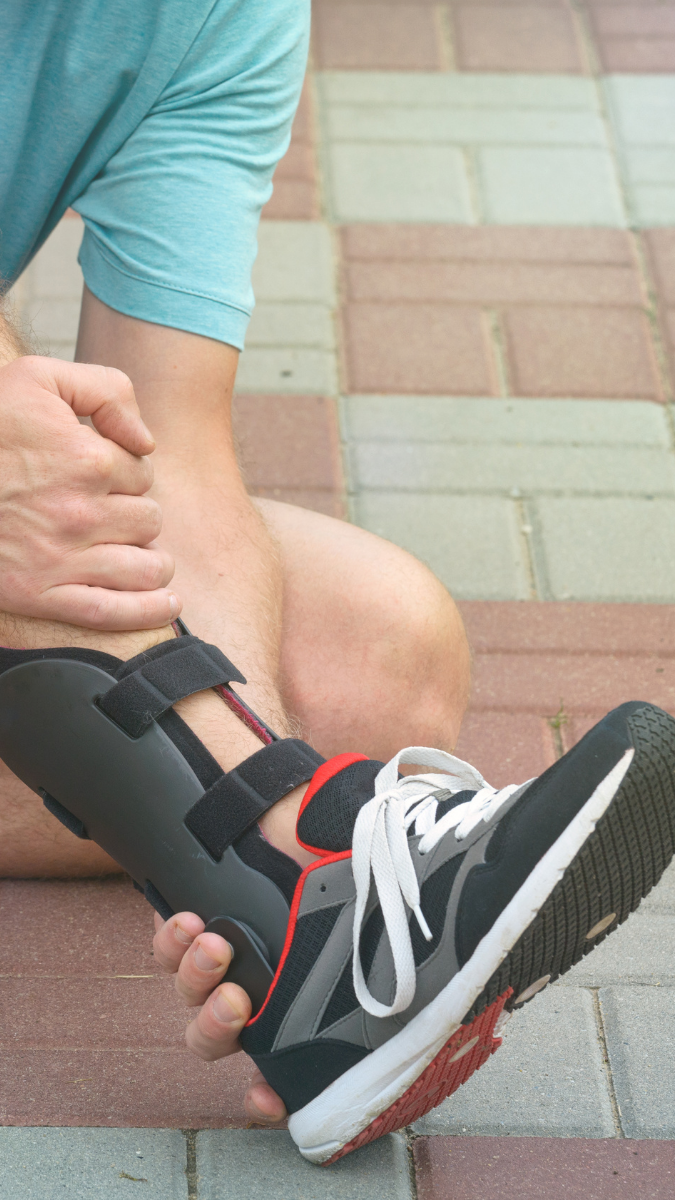
Ankle Stability and Intrinsic Foot Muscles
Have you ever stopped to think about ankle support? Why do most studies focus on the effects of external support on prevention while totally ignoring the function of muscular support originating from the intrinsic foot muscles? It appears all studies are aiming to solve an extremely specific problem, how to brace the ankle in order to arrest the motion of a lateral ankle sprain in an unstable lower kinetic chain system. Researchers were missing the problem right in front of them, why was the system unstable in the first place? In the past decade, researchers have started to investigate the relationship between intrinsic foot muscles, extrinsic leg muscles of the lower leg, and how to stabilize the ankle from within, rather than from the outside.

Ankle Sprains in Youth Athletes: A Common and Recurrent Problem
Ankle sprains are the most prevalent injury among young athletes, especially among court athletes and young girls.1 Children under 17 are the most susceptible to ankle sprains.2 Ankle sprains account for around 7% of all injuries sustained during college athletics.3 Once an ankle sprain happens around 40% of patients go on to experience chronic ankle instability and aremuch more susceptible to reinjury.4, 5Female athletes are the most likely to experience these recurrent injuries in basketball, track, and field hockey, all of which are at or above 20% of lateral ankle sprains being recurrent injuries.3

Predictors of Ankle Sprains in Athletes
What are the predictive risk factors for an ankle sprain?Female sex,1, 2, 6, 7 hip abductor and extensor weakness,1, 8, 9poor performance on balance and hopping tests,1, 10, 11, 12, 13, 14, 15, 16, 17, 18 and taking part in court sports1, 2 are risk factors for an acute lateral ankle sprain. Of note, field playing surface was not found to be a predictor of ankle sprains with artificial turf and natural grass having near the same injury rates.19, 20 Interestingly, no studies have explored the protective factor of intrinsic foot muscle strength for preventing a first ankle sprain, but they have explored the relationship between post injury instability and intrinsic foot muscle atrophy.21, 22 It was found that test subjects with chronic ankle instability had less muscular volume and activation of their foot muscles. 21, 22 In studies that have put chronic ankle instability patients through courses of foot muscle strengthening, it has been found that restoring strength and function to foot muscles increases postural stability and balance control (major predictors of ankle sprain prevention).23 Furthermore, two meta-analyses have been conducted on intrinsic foot muscle training and improved balance showing improved balance is derived from various IFM training protocols including short foot and toe-spread out exercises among others.24, 25 Considering that poor performance on balance and hopping tests is a predictive factor for ankle sprains,1, 10, 11, 12, 13, 14, 15, 16, 17, 18 one could jump to the conclusion that children raised barefoot or in minimalist shoes with superior balance and jumping abilities26, 27 would have a lesser incidence of ankle sprains vs children shod in supportive, cushioned, and deforming shoes. More peer reviewed studies need to be conducted to fully explore the preventative impact of foot strengthening on the first incidence of a lateral ankle sprain, but it has been shown that foot strengthening improves measures of strength and coordination that directly impact the prevalence of recurrent ankle sprains.24, 25, 28, 29

External Support and its Impact on Ankle Stability
Let us consider for a moment the effectiveness of external support on the muscles that directly stabilize the ankles. According to various studies, the application of external support to the ankle in the form of a brace will lead to less muscle activity and slower muscle reaction times of the muscles that control the stability of the ankle including the peroneus longus, gastrocnemius, soleus, and the gluteus medius.30, 31, 32 Next, the wear of supportive high-top shoes will delay the muscle reaction times of the ankle evertor muscles needed to counteract a lateral ankle sprain.33 Additionally, the application of orthotic support to the arch of the foot will decrease the muscular activity of the gluteus muscles (maximus and medius)34 and atrophy the intrinsic muscles of the foot directly involved in balance.35 Finally, the prophylactic application of ankle braces on otherwise healthy athletes led to decreased dynamic balance ability after a full 12 week volleyball season.36 As was noted before, the lack of balance1, 10, 11, 12, 13, 14, 15, 16, 17, 18, lack of hip abductor strength,9 and lack of hip extensor strength8 are predictive factors for increased risk for a lateral ankle sprain. Bracing the ankle and the foot makes athletes more prone to ankle sprains by robbing them of the ability to build strength and use strength of the foot ankle complex. Even worse, ankle bracing increases the risk for knee sprains and tears by increasing knee internal rotation and knee abduction.37, 38, 39 Braces are effective at mechanically arresting and limiting injurious ranges of motion from the outside38, 39 but this is a huge trade-off for athletes looking for a shortcut because long-term use of external support will have deleterious effects on the strength and coordination of muscles desperately needed to prevent future injury.30, 31, 32, 33, 34, 35, 36, 37, 38, 39

Preventing Ankle Sprains through Natural Foot Development
How would an athlete perform if they were able to build the strength and coordination needed to prevent ankle sprains through natural foot development? Primarily, children raised and instructed in natural athletic movement while barefoot have notably better coordination and balance than children that spend the preponderance of their time in supportive and constrictive footwear. 26, 27 The benefits don’t just stop at children that are barefoot, but they extend to children in minimalist shoes as well, with children in minimalist shoes also performing better at balance and jumping than children in supportive and constrictive footwear.40 It has been found that transitioning to minimalist shoes over 8 weeks can strengthen foot muscles nearly as well as a course of 8-week foot strengthening exercises.41 Finally, we have learned that the strengthening of the glute muscles in conjunction with the foot muscles brings about a greater benefit to balance than toe strengthening alone.42, 43, 44 Running barefoot and in minimalist shoes has been found to increase the activity of the glute muscles greater than running in supportive and constrictive footwear.45, 46 Combining the benefits of glute and foot strengthening that happen while wearing minimalist shoes,41, 45, 46 along with the fact that it has been shown that children perform better at balancing, sprinting, and jumping while barefoot and in minimalist shoes,26, 27, 40 it is clear that competing in minimalist shoes will help to prevent ankle sprains given the risk factors for ankle sprains: lack of balance1, 10, 11, 12, 13, 14, 15, 16, 17, 18, lack of hip abductor strength,9 and lack of hip extensor strength.8

Switch to Minimalist Shoes for Resilient Ankles
Why are we subjecting our children to footwear that we know will set them up for failure? Supportive footwear robs children of foot strength development necessary for a stable arch, which leads to a weakening of the whole lower kinetic chain from a strength and balance standpoint. Cushioning robs children of valuable sensory input from the ground they are landing on, breaking their proprioception and ability to react to potentially injurious landing surfaces. Furthermore, prophylactic ankle bracing, orthotics, and high-top shoes further weaken the intrinsic and extrinsic muscles of the foot ankle complex while reducing their muscular reaction times. We need to forge a path of resilience for young athletes that does not outsource strength to footwear and bracing but puts the power squarely in the athlete’s feet.
